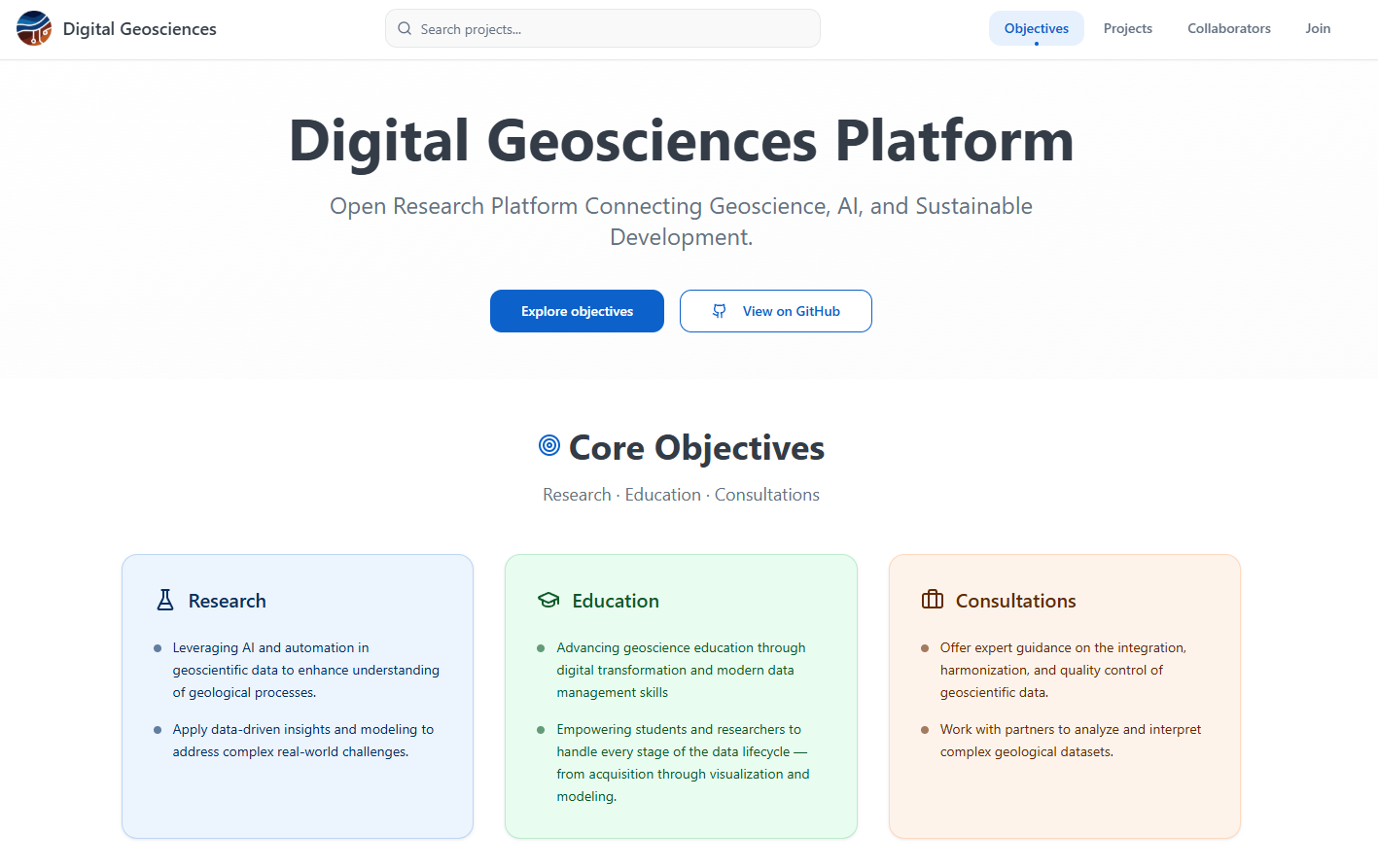Digital Geosciences — Transforming Geological Data into Knowledge
The Earth’s systems are dynamic and interconnected, yet our understanding of them remains fragmented across datasets, institutions, and disciplines. As the amount of geological data continues to grow, the need for integration, automation, and open collaboration has never been greater.
Digital Geosciences Platform has been created to address this challenge. It connects geoscience, artificial intelligence (AI), and sustainable development within a unified framework that allows researchers, educators, and consultants to seamlessly move from data acquisition to modeling and visualization. The platform is designed to transform geological data into actionable knowledge, empowering users to contribute, collaborate, and innovate.
Why We Need Digital Geosciences
A digital transformation in geoscience is essential. Traditional methods—often manual, localized, and discipline-specific—cannot keep up with the scale and complexity of today’s geological data. To advance research and improve reproducibility, we need frameworks that integrate AI, automation, and data-driven methods. We also need platforms that promote open data sharing, interactive visualizations, and collaboration 1 2, all while remaining inclusive, transparent, and globally accessible.
Core Objectives of the Platform
The Digital Geosciences Platform is built around three core objectives:
- Research: Using AI and automation in geoscientific data to improve understanding of geological processes and tackle complex real-world challenges.
- Education: Promoting digital literacy by empowering researchers and students to manage the entire data lifecycle, from acquisition to visualization.
- Consultations: Offering expertise in data integration, harmonization, and quality control, helping users transform raw data into valuable insights.
Join or Lead a Project
The platform is open to all researchers, students, and professionals. Whether you want to lead a project, collaborate, or contribute, you can join the community and make a meaningful impact.
Projects should align with the platform’s objectives—research, education, or consultations—and follow a transparent, open-source approach. To submit a project proposal, visit digitalgeosciences.com.
Toward a Digital Future of Earth Science
The Digital Geosciences Platform is not just a tool but a movement that is transforming the way geoscientists collaborate, share knowledge, and advance our understanding of the Earth. By integrating AI, data, and human expertise, we can move from simply describing the Earth to dynamically understanding it.
This is just the beginning. The platform envisions a future for geoscience that is open, interconnected, and driven by intelligence.
🌍 Explore the Digital Geosciences Platform
Cite this post
If you found this post helpful, please consider citing it:
Alqubalee, A. (2025, October 10). Digital Geosciences — Transforming Geological Data into Knowledge. ALQUBALEE Notes. https://qubalee.github.io/posts/2025/10/digitalgeosciences/
References
Alqubalee, A. (2025, April 8). WIIP: An Approach for Leveraging Geological Data Heterogeneity through Customization of Open-Source Software. https://qubalee.github.io/posts/2025/04/wiip/ ↩︎
Alqubalee, A. (2025, May 27). Management of Geological Data: Local and Cloud-Based. https://qubalee.github.io/posts/2025/05/data-repository-platforms/ ↩︎
